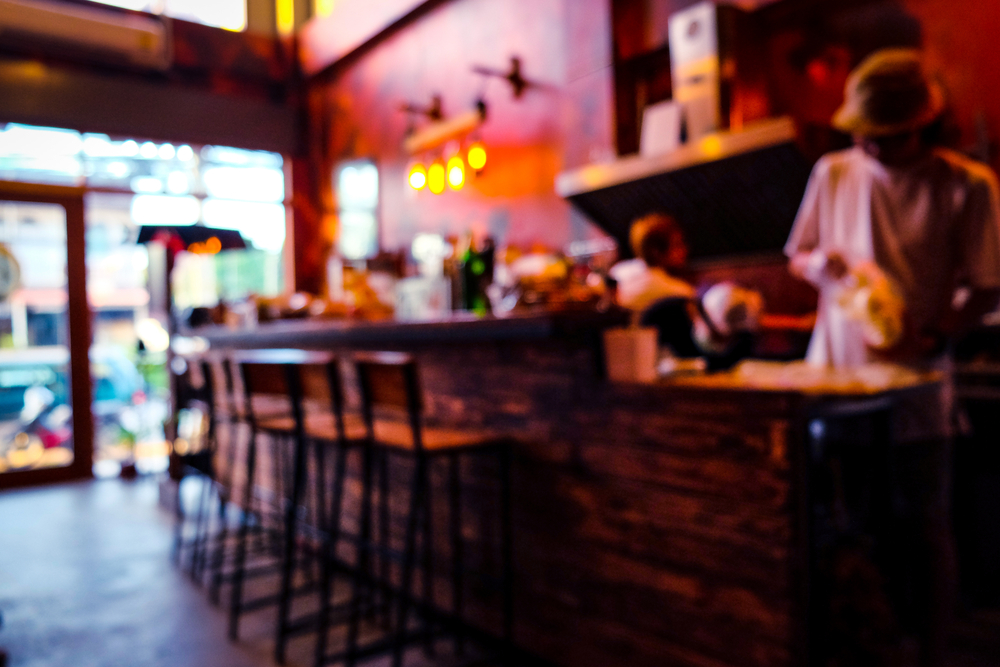Welcome to a short guide that discusses why digital signage is the future for quick service restaurants (QSR). Although the industry has kept up with advanced technology in most areas of operations, far too many QSRs remain stuck with static signs that rarely, if ever change information.
We will talk about how menus drive sales, before diving into the numerous benefits of QSRs switching from static to digital signage. Finally, we will toss around the topic of the return on investment (ROI) for installing digital signs.
Spoiler alert: There is not a clear cut financial relationship between ROI and digital signage.
How Menus Drive Sales
What happens first when you walk into a QSR? Before one of the employees greets you with a radiant smile, your eyes turn immediately to the menu board placed in a prominent spot above the service counter. How do quick service restaurants drive sales through the use of menu boards?
Let us count the ways.
Paint a Delicious Picture
The first thing most of us notice on a QSR menu board are the mouth-watering images of the featured menu items. Culver’s does an especially effective job of highlighting current specials and the most popular menu items. Who can resist the temptation of trying the featured shake of the week that is brilliantly displayed on the menu board?
First Impressions Matter
QSR menus that drive sales leave a positive first impression. Menu descriptions are presented in large enough letters to see, without having to break out the reading glasses. Menu items are organized in a logical matter, starting with appetizers on the left side of the menu board and moving category-by-category until we reach the sweet treats on the right side of the menu board. Proper lighting and a clean look also contribute to creating a positive first impression for QSR menu boards that drive sales.
Great Opportunity to Upsell
An effective QSR menu that drives sales upsells the brand’s most requested menu items. For example, a customer orders a dinner salad with ranch dressing. Then, the customer sees that he or she can add chicken to the salad for just a couple of dollars more. The dinner salad with chicken costs less than the entree Southwest Chicken Salad, yet the QSR generates more sales by offering an add-on to its menu board. QSR menus also upsell by displaying brand names by certain products, such as the iconic Coke symbol on the beverage section of the menu board.
The Benefits of Digital Signage for QSRs
Just a few years ago, you could pull up to a QSR drive through menu and think to yourself, “That menu hasn’t changed since the restaurant opened.”
The digital era has changed all of that.
Yes, QSR restaurants have implemented cutting edge technology solutions to enhance customer services and hence, boost sales. However, the digital era has been slow to change static menu boards into attention catching digital menu boards that drive revenue.
Let’s look at how QSRs benefit from digital signage.
Speaking of Increased Sales
Taco John’s, which boasts more than 300 stores located primarily in the Midwest and Upper Midwest, converted to digital menu boards in 2014. Seven months after unveiling the digital menu boards, the QSR witnessed an increase in sales of 12%. Because of the increase in sales, Taco John’s converted the remaining restaurants under its umbrella to digital signage.
Here’s why digital signage increases sales:
- Motivates customers to make impulse purchases
- Proven strategy for promoting featured menu items
- Attention grabbing calls to action
Studies performed across the business spectrum have concluded that nearly 80% of American consumers frequently make impulse purchases. Let’s go back to Culver’s, one of the leaders in selling tasty sweet treats. A customer walks in and orders a double cheeseburger, small fries, and a soft drink. She is about to pay for her meal when she suddenly notices the featured shake of the week, which is an Oreo crumble shake. Craving a sweet snack all day long, the customers adds the shake to her order.
Digital signs that are designed to promote featured menu items encourage impulse buying.
One study placed a static sign above a table that read “Free Tote Bag.” A few feet away, a digital sign hung over a table that read the same “Free Tote Bag.” Guess which table had the most traffic.
You guessed right. The table that the digital “Free Tote Bag” above it attracted 610 people, while the static sign attracted only six people.
Talk about a powerful call to action.
Improving Engagement with Customers
They say the human psyche possesses six needs that if are fulfilled, make us feel complete. One of the six needs is the need to engage with other people. In the world of marketing, engagement means connecting with a brand.
By installing digital signage, especially for the all-important menu board, you create a connection with your customers. Digital menu boards and other types of QSR signs produce new stimuli for consumers that pique their collective interest.
A recent survey stated 70% of respondents to the survey remember seeing a digital video display over the past 30 days. Nearly half of that number specifically remembered the content presented by the digital video display.
It’s not just important for digital signage to leave a positive first impression; it is also important for digital signage to leave a long lasting positive impression by engaging your QSR customers.
Endurance Wins the Customer Race
What happens to a static printed menu board and other types of static signage that are exposed to long term smoke and moisture? Think about the fryer and the dishwashing area. Not all of the smoke generated by the fryers climbs up into the commercial vent. Some of it lingers over a static print sign until one day, when the smoke turns the static sign into an ugly brown stain. Prolonged exposure from moisture created in the dish area also diminishes the quality of a static print display sign.
Installing a digital sign ensures you present your best QSR forward for years to come by displaying menu items and other information that are not tainted by moisture and grease smoke.
Reap the Financial Reward of Long-Term Savings
Why do a large majority of consumers fear making a big purchase? From plunking money down on a home to driving off a dealership lot in a new car, spending thousands of dollars on a product literally makes many of us quiver.
The same principle applies to QSRs that consider investing in digital signage. Fear derives from spending more than the business is prepared to spend or can afford to spend.
Let’s review some of the high costs of static printed menu board and other types of QSR digital signs:
- Printing
- Distribution
- Labor
Because of long-term savings, digital signage will give your QSR a higher ROI than what you can expect from a static print display campaign. The long term savings come from a one-time installation charge that will bring your QSR an increase in sales for years to come.
A Little More about ROI and Digital Signage
ROI is one of the most frequently cited business financial terms. It is calculated by taking the profit made on an investment, subtracting the investment cost, and then dividing the remaining number by the same investment cost. Expressed as a percentage, ROI gives business owners and operators about the success of a wide variety of business initiatives.
Does ROI tell the tale of a digital signage investment?
The answer is not clear cut, as it is difficult to quantify how much additional money your QSR earns because of the installation of digital signs. A much better term and one that you cannot quantify is called Return on Objective (ROO).
ROO is more of a yes or no question. Have the digital signs installed around your QSR done a better job of engaging customers. Has the signage provided a boost to daily sales? Has your QSR saved money by not forking over cash for printing supplies and the labor required to develop static signs.
Sometime, the best answers are yes or no. For QSR digital signage, the RRO answers are all yes.




